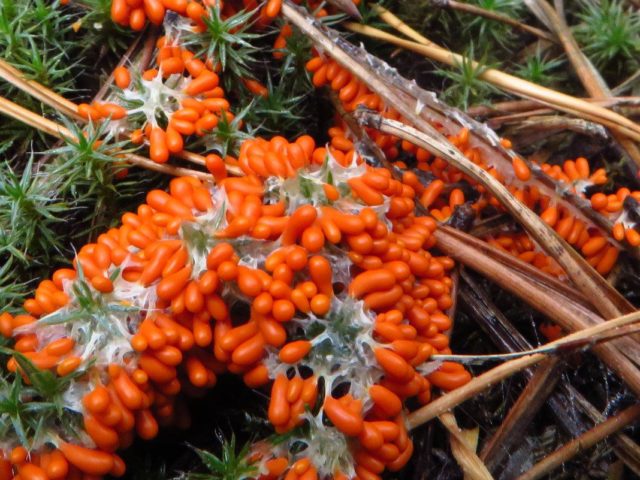Content
Trichia decipiens (Trichia decipiens) has a scientific name - myxomycetes. Until now, researchers do not have a consensus about which group these amazing organisms belong to: animals or fungi.
The deceptive Trichia got a not very pleasant name: the literal translation from English is "slimy mold", in Russian - "slime mold".
Usually, these specimens were ranked among the lower plant kingdoms and were placed next to the mushrooms, sometimes even combined with them. According to current standards, deceptive trichia is classified as the simplest and is more likely considered animals than plants or mushrooms.
What does Trichia look like?
The fruit body is twisted or stretched, located on a cylindrical dark brown stalk, which becomes lighter towards the top. The top is filled with spores. This area of the slime mold looks like an inverted shiny, bright red-orange blob up to 3 mm in size.
As it grows, the head changes color. Its color goes from olive to yellow-olive or brownish-yellow. The mushroom capsule is filmy, fragile. When the fruiting body cracks, the top becomes cupped.

Trichia deceiving in a forest area
Where and how it grows
Trichia deceptive lives in the warm season on the surface or inside a tree that rots, on stumps, on fallen leaves, in moss. These mushrooms can move slowly at a speed of 5 mm per hour, constantly taking on new forms. They move purposefully. Young Plasmodium tries to leave bright places and tends to wet ones. Crawling, it can envelop leaves and branches.

The mushroom feeds mainly on bacteria
Distributed in the flattering terrain of the temperate regions of the European part of the country, Western and Eastern Siberia, the Far East, as well as in Magadan, Georgia.
Is the mushroom edible or not
Inedible. The mushroom does not contain toxic substances, but it is not approved for consumption.
Conclusion
Trichia vulgaris is widespread in temperate regions, mainly growing on decaying and damp tree debris. Its appearance resembles small sea buckthorn berries. Not used for food.








